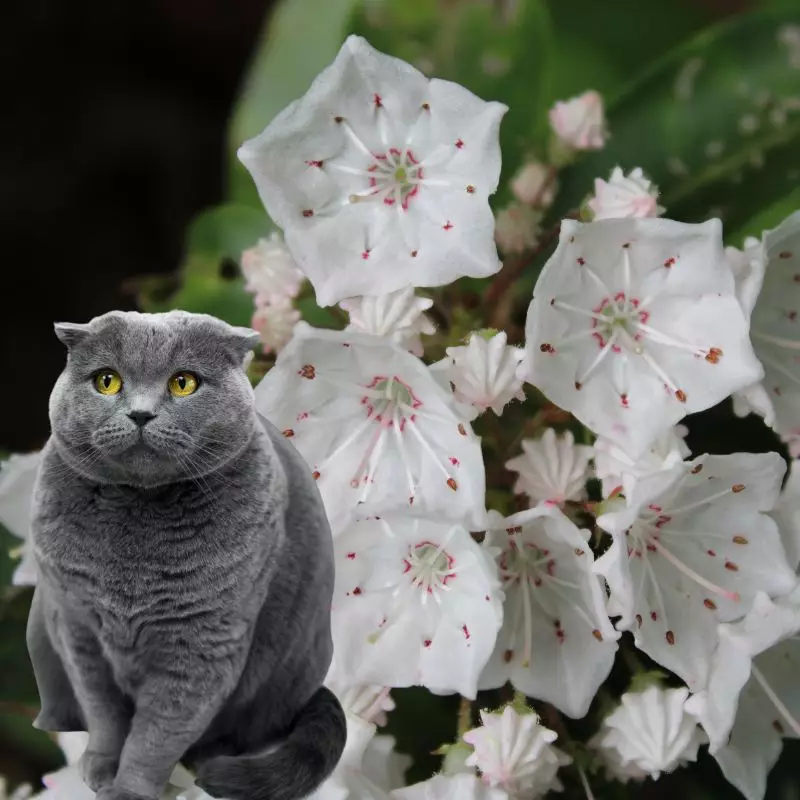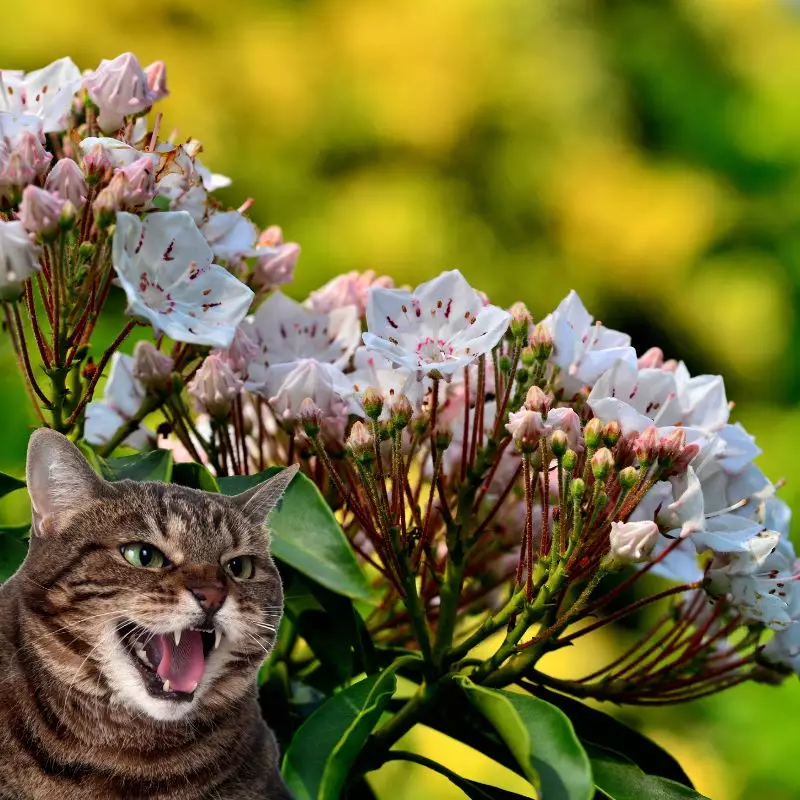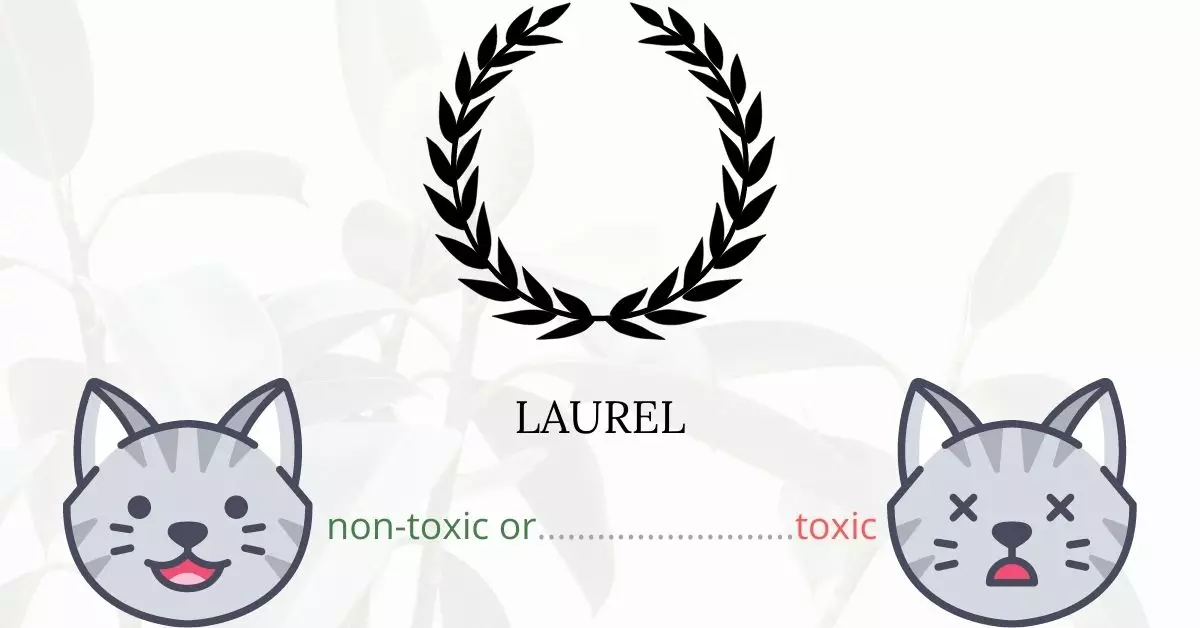Yes, laurel is toxic to cats. The evergreen shrub, commonly grown for its beautiful blossoms, contains grayanotoxins which are hazardous to felines. When ingested, these toxins can alter sodium channels in the body, leading to potential injuries to the heart and skeletal system. Symptoms to watch out for in cats include vomiting, diarrhea, and weakness. If these are observed, it is crucial to immediately seek veterinary care for your feline friend.
This article has been crafted in collaboration with a team of experienced DVMs (doctors of veterinary medicine). Their valuable insights ensure that we provide accurate and up-to-date information about the potential risks plants pose to cats. Furthermore, our research includes high-authority websites such as ASPCA and PetMD to ensure comprehensive coverage on the subject, especially focusing on plants like the laurel.
Clinical Signs of Laurel Poisoning in Cats

The ingestion or even mere contact with the laurel plant can pose severe health risks to cats. Here are some of the clinical signs associated with laurel poisoning, along with explanations for each symptom:
- Vomiting: Caused by the body’s natural response to expel the toxic compounds present in the laurel. It is an immediate reaction as the digestive system tries to get rid of the ingested toxins.
- Diarrhea: This is another way the body attempts to rid itself of harmful substances. The toxins irritate the intestines, leading to frequent and loose bowel movements.
- Hypersalivation: The grayanotoxins found in the laurel can irritate the oral mucosa, causing an excessive production of saliva.
- Low blood pressure: The toxins can interfere with the normal functioning of the heart and circulatory system, resulting in decreased blood pressure.
- Breathing difficulties: Laurel toxins can lead to respiratory distress by affecting the muscles and neural controls related to breathing.
- Lethargy: As the toxins circulate and affect various body systems, the cat may become less responsive, indicating that its body is under significant stress.
- Coma: In severe cases, the neurological effects of the toxins can depress the central nervous system to the point where the cat falls into a coma.
- Death: If not treated in time, the cumulative effects of the toxins can lead to multi-organ failure and, unfortunately, death.
It’s essential for cat owners to be vigilant and seek immediate veterinary care if any of these symptoms are observed after a cat has been in contact with a laurel plant.
First Aid and Treatment of Laurel Poisoning in Cats

The vet will begin treatment after doing physical examinations and maybe certain laboratory testing. The vet’s first course of action will almost certainly be to induce vomiting. This is done to get rid of any remaining laurel plant in your cat’s stomach. After the vomiting has ceased, the vet can give your cat an activated charcoal to absorb any toxins that haven’t yet made their way into his circulation. The vet may need to deliver activated charcoal many times over the next several hours, depending on how much plant material your cat has swallowed. A gastric lavage, which is a medical procedure that washes the stomach cavity to remove any poisons that remain on the stomach’s lining, can also be performed by the veterinarian.
To avoid dehydration and aid in the elimination of toxins, intravenous fluid treatment may be required. If your cat is having difficulty in breathing, the veterinarian may recommend respiratory support until his health improves. Other medications such as sodium blockers like quinidine or isoproterenol can also be administered to your cat.
Recovery from Laurel Poisoning in Cats

Once your cat is allowed to go home, keep him or her in a calm and comfortable environment while his body recuperates from the stressful experience. Consult your veterinarian about switching his diet to gentler foods that won’t irritate his stomach right after therapy.
The outlook of a cat’s recovery from laurel poisoning may vary depending on the extremities of his condition but as long as your cat made it to the veterinary clinic or hospital in time and was able to receive proper and immediate treatment, he or she has a high chance of full recovery.
Prevention of Laurel Poisoning in Cats
As long as you do not have a laurel plant at home, keeping your cat indoors is the best way to prevent another poisoning episode. Ensure that your home is cat-friendly and maintain your cat in good health condition.
If you love plants but have cats at home, check out these lists:





